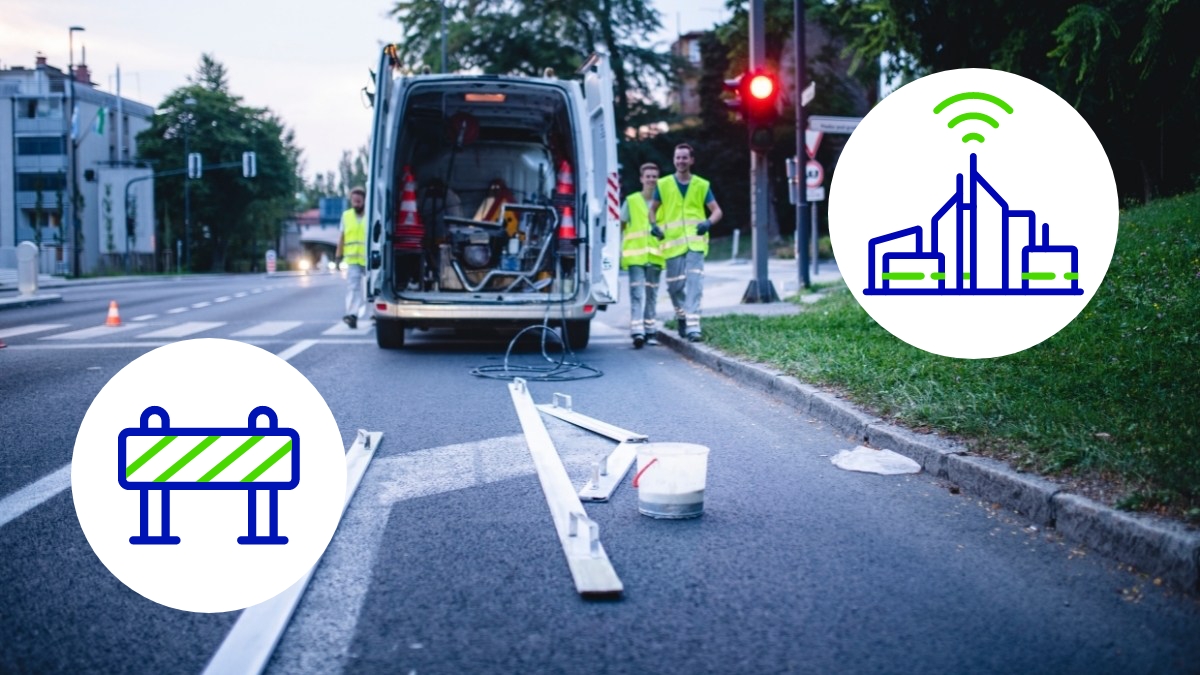Smart Mobility | 21 December 2021
Mobility Data: A New Model for Transport Planning
‘What is transport planning?’ Sounds like a very simple question with an equally simple answer. But in the modern world we all live in, this is no longer the case.
At a basic level, transport planning is the way in which different services and modes of transport are operated, managed and delivered. In theory, the ultimate goal is to make sure that the supply of the various modes of transport available come together to meet the demand of the population. However, a number of new priorities and demands have emerged that have redefined what transport planning is, and what urban planners and authorities need to do to deliver transport successfully.
In this blog, we’ll take a look at how things have changed, the importance of data in responding to those changes, and what a smarter and more data-driven city could look like from a transport perspective.
New priorities for transport planning
Transport provision is now about so much more than getting people from A to B as efficiently as possible. This is because of wider societal factors that affect us all, and three in particular: climate change, the health crises and the rise of digital and Internet-enabled technology. These factors have come together to influence major changes in how people live their lives, and these changes have knock-on effects on what members of the public need and expect from transport.
As a result, transport planners trying to successfully cater for the future demands of a population also have to take into account the following:
- Sustainability: passenger road vehicles account for 45% of global CO2 emissions produced by transport. More people are aware of the impact of transport on climate change, and are willing to switch to more environmentally friendly ways of travelling
- Cycling: connected to sustainability, transport planners need to facilitate safe cycle lanes and other cycling infrastructure, so that it becomes a preferred option to car travel for most short journeys
- Last-mile delivery: the meteoric rise in online retail means last-mile delivery - the final stage of moving goods from transport hubs to customers’ homes - has become widespread. Planners have to take into account how easy it can be for large numbers of these delivery vehicles to move around
- Repurposed sidewalks: the pandemic has accelerated the trend of public spaces like sidewalks being handed over through permits to businesses like bars, cafes and restaurants, with an impact on how these spaces can still be used for transport purposes
- Remote working: with more people set to work fully or partially from home post-pandemic, the shape of commuter travel is fundamentally changing. Demand at peak hours has reduced, while demand at other times of the day may increase due to the more flexible nature of people’s working arrangements
All these issues add further layers of complexity to modern transport planning. On top of this, every town and city is different, with varying demographics, affluence and types of employment in play. This means that what might be right for one particular city may not necessarily be right for another. As a result, transport planners have to understand exactly what the key demands are in their specific urban area - and only through data can they develop this understanding.
Making the right decisions with data
The reason data is now so essential to transport planning is because it can remove the guesswork and uncertainty from the decision-making process. This is especially important at a time where transport demands are constantly evolving, and the more flexible nature of people’s lives mean demand is less predictable than it has been before.
And the issue is not necessarily just having data available: the type and quality of data at the disposal of a transport planning team can make a big difference, too. For example, a team may have figures available that tell them congestion is particularly bad at a particular road junction.
However, the figures won’t tell them that the congestion is being caused by a damaged road surface full of potholes that drivers are slowing down to avoid. Visual evidence, collected by camera-equipped cars, can identify that issue and allow the transport planning team to plan road repairs accordingly without the need for site visits.
As transport demands evolve and new issues emerge, this visual technology can be extremely useful in not only identifying new trends, but also identifying why they’re emerging. Putting changes in their correct context ensures that the right planning decisions are made more often, and quickly enough to react to new demands, maximising the cost-effectiveness of transport spending.
A smarter way to plan transport
This data-driven approach to transport planning is just one element of how transport will work within the ‘smart cities’ of the future. It should be able to ensure that the underlying infrastructure of urban transport is always fit for purpose, and continually meets the needs of residents.
There are, of course, many other technologies used within smart city transportation that will get more focus because they affect the end-user more directly. Innovations like route information and timetabling, integrated public transport fare systems, and intelligent traffic light timing will all be noticed by people day-to-day. But it’s the behind-the-scenes work of transport planning, driven by quality data, that can make just as big a difference in helping people move around more easily, more safely, and in ways that better protect the environment around us.
Street Smart from Cyclomedia helps transport planners get the valuable visual data that can help them make the right decisions for their towns and cities. See how it works in our short video here.
